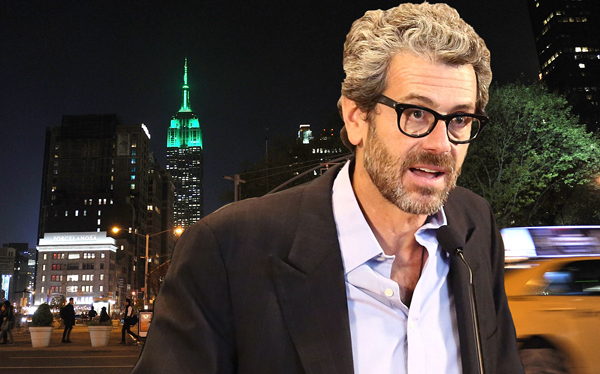Trending
Can ESRT finally fix its retail problem?
Anthony Malkin's REIT planning gut rehab of space

Empire State Realty Trust is betting that a gut renovation of the iconic tower’s increasingly vacant retail space will attract tenants and reverse falling revenue.
The real estate investment trust, led by Anthony Malkin, has about 50,000 square feet of retail that will be available by 2020, according to Bloomberg.
Up for grabs is space on the ground floor, concourse and second floor, and ESRT has started a “gut rehab of all retail space for the first time since the building opened,” according to marketing account executive Dana O’Donnell.
Roughly 24,000 square feet of below-grade concourse space now occupied by Heartland Brewery and Rotisserie will be available when the tenant’s lease is up in 2020.
As part of its renovation plan, ESRT will move the entrance to the building’s observation deck from Fifth Avenue to 34th Street. That corner is one of the most highly trafficked in the city, and Newmark Knight Frank’s Jeffrey Roseman said the Empire State Building is “its own unique submarket of the city.”
The retail at the building has long struggled. In 2016, retail experts told The Real Deal that high asking rents, unexciting tenants and ESRT’s legal status as a real estate investment trust was hurting the building’s retail prospects.
According to regulatory filings, there’s been a sizable gap between what existing tenants have been paying and what ESRT has been asking for vacant space. In 2016, ESRT was asking for about $550 a square foot for ground floor space, when many nearby landlords on Fifth Avenue were charging $300 to $400 a square foot. Meanwhile, Walgreens is paying just $75.50 a square foot on its ground floor and second floor space.
The distance from the Empire State Building’s retail options to the Herald Square shopping corridor has also been a challenge for ESRT.
It “has been trying very hard to really position the Empire State Building as part of the Macy’s shopping district, which is considered the ground zero of 34th Street shopping,” Peter Braus, of Lee & Associates, told TRD in 2016. “Macy’s is the engine that powers the whole district. But it’s a struggle to get the Macy’s shopper over that far.”
Cushman & Wakefield’s Joanne Podell, who is marketing the space, told Bloomberg that tenants in the market are looking for a location with high density along a shopping corridor. “I think they would make this one of their priorities,” she said.
The Empire State Building’s retail produced just $5.6 million out of the $233.1 million the tower generated during the first nine months of 2017, compared to $7.2 million during the same time a year earlier, according to regulatory filings. [Bloomberg] – Rich Bockmann




